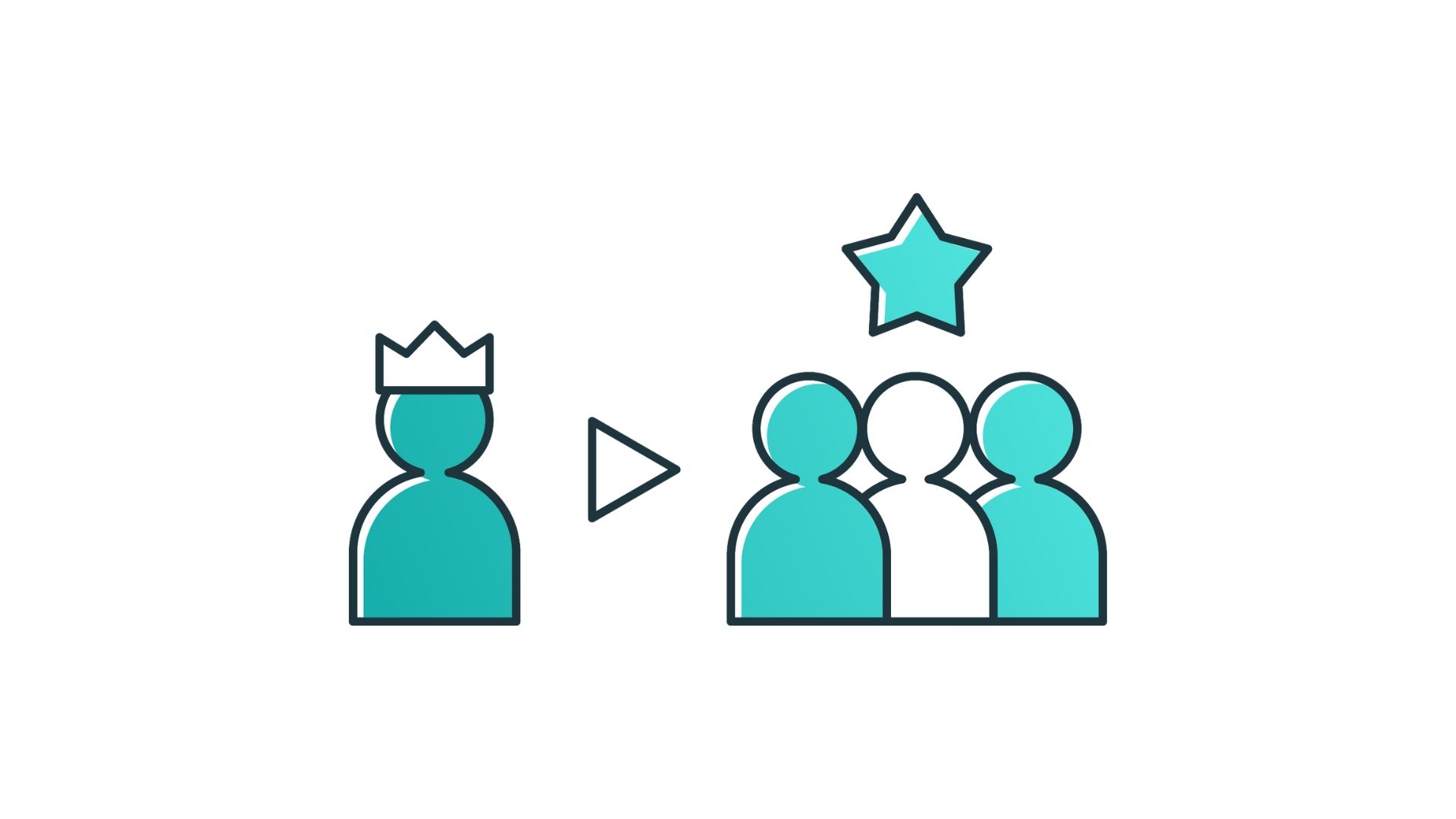Insight 11 June 2025
From 'Me' to 'We'
The Identity Leadership Revolution

There has been a shift in how effective leadership operates; rather than focusing on the individual, identity leadership centres on cultivating a shared sense of collective purpose among team members.
The Four Domains of Identity Leadership
Steffens et al. (2014, 2021) and Haslam et al. (2020) established identity leadership as operating across four domains, namely:
- Be an Identity Entrepreneur: Take the lead in defining what your team or organisation stands for and help shape its core values and purpose.
- Represent the Group: Embody the qualities and values that your team sees as essential. Be someone they can look at and say "that's what we're about."
- Advance the Group's Interests: Actively work to promote and protect your team's goals, ensuring their needs are met and their contributions are recognised.
- Act as an Impresario: Like a skilled producer, orchestrate and showcase your team's collective identity and achievements, both within the group and to the outside world.
These four dimensions are conceptualised as working together to create what organisational psychologists call "identity leadership", namely a style of leadership that's less about being above your team and more about being the person who helps define, represent, and champion who you are together.
The Four Domains of Identity Leadership
Steffens et al. (2014, 2021) and Haslam et al. (2020) established identity leadership as operating across four domains, namely:
Be an Identity Entrepreneur: Take the lead in defining what your team or organisation stands for and help shape its core values and purpose.
Represent the Group: Embody the qualities and values that your team sees as essential. Be someone they can look at and say "that's what we're about."
Advance the Group's Interests: Actively work to promote and protect your team's goals, ensuring their needs are met and their contributions are recognised.
Act as an Impresario: Like a skilled producer, orchestrate and showcase your team's collective identity and achievements, both within the group and to the outside world.
These four dimensions are conceptualised as working together to create what organisational psychologists call "identity leadership", namely a style of leadership that's less about being above your team and more about being the person who helps define, represent, and champion who you are together.
The Impact of Identity Leadership on Teams
Studies by van Dick et al. (2018, 2021) across 30 countries demonstrated that leaders who build strong group identity see measurably higher performance, increased innovation, and reduced burnout rates. Further, these studies found stronger team cohesion, higher retention rates, and improved adaptability during organisational change. The key differentiator appears to be the leader’s ability to help team members see their contributions as part of a larger, meaningful narrative.
Teams operating under identity leadership principles show increased use of “we” language, improved conflict resolution through shared values, and enhanced psychological safety. This approach transforms groups from collections of individual contributors into unified teams working toward shared objectives.
Haslam, S. A., et al. (2011). The new psychology of leadership. Sage.
Steffens, N. K., et al. (2014). Leadership as social identity management: Introducing the identity leadership inventory (ILI). The Leadership Quarterly, 25(5), 1001-1024.
Steffens, N. K., et al. (2021). Advancing the social identity theory of leadership. Organisational Psychology Review, 11(1), 35-72.
van Dick, R., et al. (2018). Identity leadership going global: Validation of the identity leadership inventory across 20 countries. Journal of Occupational and Organisational Psychology, 91(4), 697-728.
van Dick, R., et al. (2021). Identity leadership, employee burnout and the mediating role of team identification. International Journal of Environmental Research and Public Health, 18(22), 12081.
The Impact of Identity Leadership on Teams
Studies by van Dick et al. (2018, 2021) across 30 countries demonstrated that leaders who build strong group identity see measurably higher performance, increased innovation, and reduced burnout rates. Further, these studies found stronger team cohesion, higher retention rates, and improved adaptability during organisational change. The key differentiator appears to be the leader’s ability to help team members see their contributions as part of a larger, meaningful narrative.
Teams operating under identity leadership principles show increased use of “we” language, improved conflict resolution through shared values, and enhanced psychological safety. This approach transforms groups from collections of individual contributors into unified teams working toward shared objectives.
Haslam, S. A., et al. (2011). The new psychology of leadership. Sage.
Steffens, N. K., et al. (2014). Leadership as social identity management: Introducing the identity leadership inventory (ILI). The Leadership Quarterly, 25(5), 1001-1024.
Steffens, N. K., et al. (2021). Advancing the social identity theory of leadership. Organisational Psychology Review, 11(1), 35-72.
van Dick, R., et al. (2018). Identity leadership going global: Validation of the identity leadership inventory across 20 countries. Journal of Occupational and Organisational Psychology, 91(4), 697-728.
van Dick, R., et al. (2021). Identity leadership, employee burnout and the mediating role of team identification. International Journal of Environmental Research and Public Health, 18(22), 12081.
Further Reading
Copyright © 2025 Potenture
Don't miss your chance to join The Purposeful Life


Seven Core Capabilities Guide Available Now!

